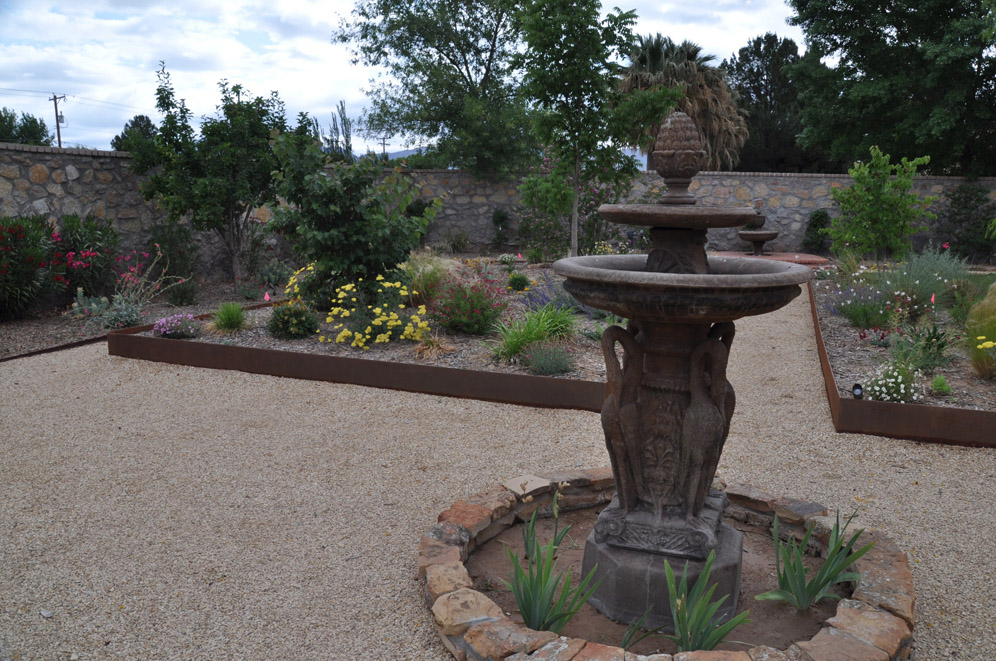
Common name:Yarrow, Milfoil 'Moonshine'
Botanical name:Achillea 'Moonshine'
Long, straight stems with pale yellow flowers are striking on the mats of green to grey-green leaves of this plant, which are flatter and less divided than those of the Achillea millefolium. This Yarrow propagates easily from rooted cuttings or divisions which should be performed in the early spring or fall. Following bloom, one should dead head the plant and divide the clumps when it appears crowded. Introduced by Alan Bloom in the 1950's.

Common name:Oleander
Botanical name:Nerium oleander
Oleander is a dense, upright evergreen shrub that grows quickly to 6' x 4'. Leaves are dark green, leathery, and glossy. Accepts reflected sun. Flowers appear spring to fall. Excellent screen. Good summer color. Native to the Mediterranean.

Common name:California Fan Palm, Petticoat Palm
Botanical name:Washingtonia filifera
Palm tree grows to 60' x 20' . It has light green fronds 3'-6' long. Seeds appear in fall so be sure to remove seed stalk to avoid mess on patios and sidewalks. California Fan Palm is the only palm native to California.

Common name:Gaura
Botanical name:Gaura lindheimeri
Flowering perennial that quickly reaches 1' x 1-1/2'. This semievergreen plant has pink buds that open to showy white flowers spring to fall. The flowers resemble butterflies and it attracts butterflies. Accepts full sun to partial shade. Native to the southwest U.S. and Mexico.

Common name:Autumn Sage Furman's Red
Botanical name:Salvia greggii 'Furman's Red'
Semievergreen sprawling shrub grows to 2' x 2'. Pale green leaves. Tubular flowers are red, pink or white and bloom in the spring and fall. Attracts hummingbirds. Needs good drainage. Prefers filtered shade in Phoenix. Native to Texas.

Common name:Superstition Mallow
Botanical name:Abutilon palmeri
Herbaceous shrub with velvety, heart-shaped leaves. Grows quickly to 4' x 3'. Good for subtropical effect. Plant it next to a patio to enjoy soft texture. Takes full sun or partial shade. Cup-shaped, apricot-colored blooms on and off during warm months.
| Designer: Sabina Munoz | Raised Planter Garden 8 |
Photographer: GardenSoft |
Soils and Compost:
Incorporate compost 6" into your soil to retain water, reduce compaction, feed earthworms, and provide valuable nutrients to your plants.
Water Saving Tip:
Different areas of your landscape have different water requirements.
Shrubs need much less water than lawns and drip systems should never be scheduled on the same program with lawns.
Establish separate watering schedules for those areas.
Integrated Pest Management:
Attract, or buy beneficial insects such as ladybugs and lacewings to control pest outbreaks in your garden.
